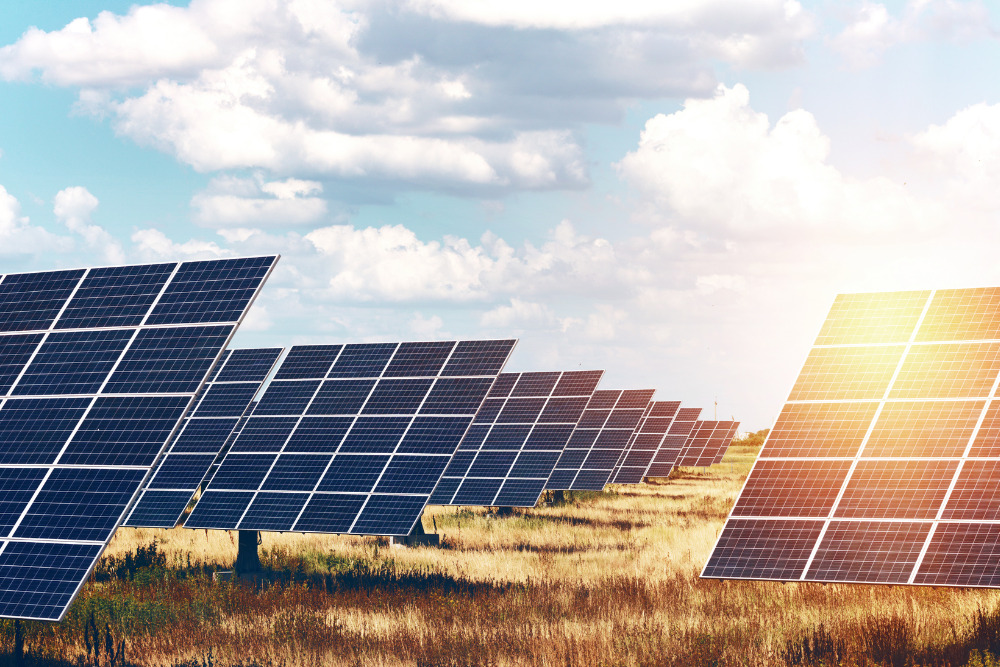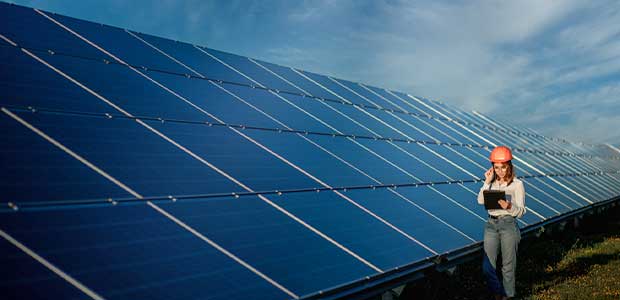Get Reliable Solar Power Solutions from Simply Solar Illinois Today
Get Reliable Solar Power Solutions from Simply Solar Illinois Today
Blog Article
Solar Power 101: A Beginner's Overview to Sustainable Energy Solutions
As the world progressively shifts in the direction of sustainable energy services, comprehending the fundamentals of solar power ends up being necessary for both individuals and organizations. By checking out the benefits of solar innovation, along with the monetary motivations and installation processes, one can get a clearer perspective on just how to properly incorporate this renewable resource into their power approach.
Comprehending Solar Energy
At its core, comprehending solar power involves realizing the essential concepts of exactly how sunshine can be transformed right into functional electrical energy. Solar energy is originated from the sunlight's radiation, which can be utilized with numerous modern technologies. The key system for this conversion is the photovoltaic effect. This phenomenon occurs when sunshine strikes semiconductor products, usually silicon-based, within solar batteries. The energy from the sunlight thrills electrons in the semiconductor, enabling them to stream freely and create direct existing (DC) power.

Recognizing solar power also involves recognizing its environmental advantages. By utilizing sunshine, we can mitigate greenhouse gas exhausts and reduce air contamination, adding to a more sustainable future. The advancements in innovation and effectiveness of planetary systems remain to boost their practicality, making solar power a significantly attractive option for global energy needs.
Types of Solar Power Equipments
Different kinds of solar power systems are generally utilized to harness solar energy for electrical energy generation. The main classifications include photovoltaic (PV) systems, focusing solar power (CSP) systems, and solar thermal systems.
Photovoltaic systems utilize photovoltaic panels composed of silicon cells that convert sunlight directly right into electrical power. These systems are functional and can be installed on roofs, ground places, or integrated right into building products.
Concentrating Solar energy systems, on the other hand, employ mirrors or lenses to focus sunshine onto a little area, producing heat that drives a vapor generator to produce power - Simply Solar Illinois. CSP systems are usually released in large power plants and require direct sunlight, making them much less ideal for over cast regions

Each kind of solar energy system has its distinct attributes, applications, and suitability depending upon geographic place, power requirements, and budget plan, making it essential to evaluate choices based upon particular scenarios. - Simply Solar Illinois

Advantages of Solar Power
Utilizing solar energy with different systems not just gives a lasting method to create electrical energy but likewise provides a plethora of advantages. One of one of the most substantial benefits is the decrease in greenhouse gas exhausts, adding to a cleaner atmosphere and combating climate adjustment. Solar power is sustainable, suggesting it is inexhaustible and readily available as long as the sunlight beams, unlike nonrenewable fuel sources, which are finite and depleting.
Additionally, solar power can cause substantial expense financial savings over time. Property owners and businesses can reduce their electricity bills dramatically, and in most cases, they may earn credit ratings for excess energy produced through web metering. Additionally, the solar market creates jobs, from making to installment, promoting neighborhood economic climates.
One more compelling advantage is power self-reliance. By generating their own electrical energy, people and areas can decrease dependence on outside energy resources, improving durability against fluctuating power prices and supply disturbances. Furthermore, solar power systems require best site marginal maintenance, making them a practical alternative for sustainable power generation.
Setup Refine Summary
The installment procedure for solar power systems typically entails a number of vital steps that guarantee efficient assimilation into a residential property. Originally, a detailed website analysis is conducted to assess the roof's alignment, shielding, and architectural integrity, which are vital to optimizing solar panel performance. Following this assessment, the design phase starts, where a customized solar energy system is set up based on the property owner's power demands and preferences.
When the design is wrapped up, the essential licenses and approvals are acquired from neighborhood authorities, making sure conformity with laws. The real setup entails mounting the solar panels on the roofing or ground, attaching them to an inverter, and integrating the system with the building's electric arrangement. This stage may also involve installing battery storage space systems, depending on the style.
After installation, a thorough assessment is performed to verify the system's capability and safety and security. Finally, the system is commissioned, and house owners are educated on its operation and upkeep. With the installment full, the solar power system can begin creating renewable energy, adding to sustainability and lowering utility prices. This structured method anonymous makes sure that planetary systems are both reliable and reputable, optimizing their long-lasting benefits.
Financial Motivations and Financial Savings
Checking out the economic incentives and financial savings linked with solar power systems can dramatically enhance the charm of making the button to eco-friendly energy. One of the most remarkable rewards is the federal solar tax credit history, which permits house owners to subtract a portion of their solar system installation expenses from their government tax obligations.
Along with tax obligation credits, numerous states supply rebates that can additionally reduce in advance costs. Some utility companies also supply performance-based incentives, fulfilling solar power manufacturing gradually. Financing choices, such as solar financings and leases, allow customers to set up systems with little to no deposit, making solar power a lot more obtainable.

In addition, solar systems can raise property values, supplying a solid return on investment. In general, the combination of motivations and cost savings makes solar power a financially eye-catching selection for numerous homes.
Verdict
To conclude, solar power stands for a crucial part of sustainable power options, giving a pathway toward reduced carbon footprints and enhanced environmental management. The varied kinds of solar energy systems, paired with significant financial motivations, facilitate wider fostering among people and areas. Comprehending the setup processes and advantages connected with solar power equips stakeholders to make enlightened decisions. Inevitably, the transition to solar energy not just cultivates environmental obligation however likewise advertises economic savings official source and energy self-reliance.
Report this page